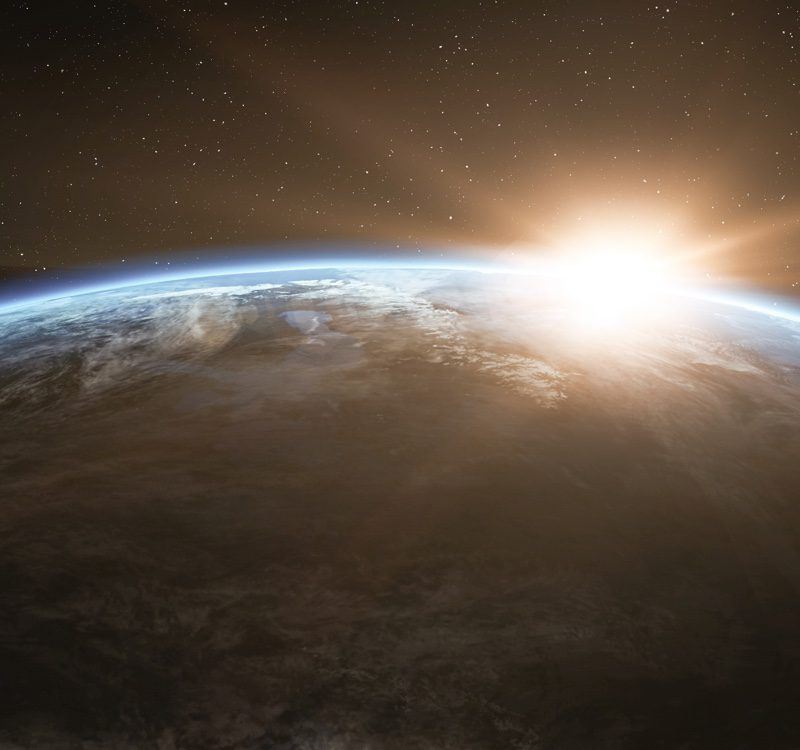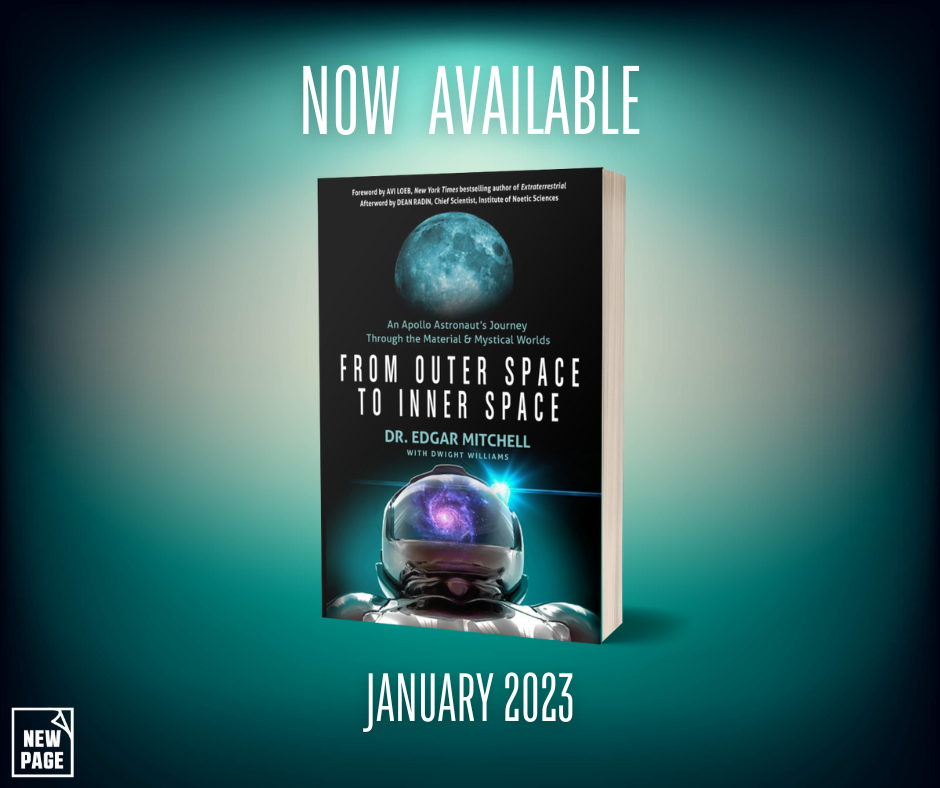From Outer Space to Inner Space traces two remarkable journeys―one through space and one through the mind. Together they fundamentally alter the way we understand the miracle and mystery of being, and ultimately reveal humankind’s role in its own destiny.
Previously published as The Way of the Explorer, this edition includes a new foreword by Avi Loeb, New York Times bestselling author of Extraterrestrial, an afterword by Dean Radin, IONS Chief Scientist, and a postscript chapter by the author, IONS Founder Dr. Edgar Mitchell (1930-2016).
Here is an excerpt from the book, published on January 1, 2023:
I believe humans undertake most major journeys for reasons that are buried in the subconscious stream of life—the ineluctable impulse. Often we leave home in the interest of finding answers, and in the process we create new questions. This is why we explore space: the better to see ourselves in the vast scheme of a vast universe. To explore is to expand the horizon. Through this process we have found more questions to pose than we are presently capable of answering. But in this grand effort, we have fallen in closer step with the Tao. To send explorers into space is to participate in the ancient human drama, furthering the sphere of our human perceptions and intention. The dream we secretly dream is to reveal our own significance, to make the universe in our own image, just as we made the gods. But we must go there first.
These modern-day journeys, no less than their ancient predecessors, are the actualization of the mystical journey. Though the Hubble space telescope has helped to more clearly reveal an incomprehensibly large and continually expanding universe, we humans insist on our own divine importance. Centuries ago we discovered that we are not the geographical center of our tiny solar system, much less the cosmos; now it’s quite certain that neither are we the biological center. In the face of this we try to find significance for ourselves. With awareness that the individual lifespan may be but a brief crack of light buttressed by infinite darkness on either side, we insist that the individual human life has some purpose in the larger scheme of things. And indeed it does, if we use our limited time to make it so.
Back in the 1960s there was, for a time, reason for me to hope that I could be one of those astronauts who would make the next logical step in humankind’s saga to explore the cosmos. My doctoral dissertation proposed a navigation plan for such a mission. And there was reason to hope that our government would find this a worthy priority after our nation’s gallant series of missions to the moon. The mandate set forth by President Kennedy in 1961 came in both on time and on budget—a feat almost unheard of for the federal government today. In the aftermath of such success, I also felt it wasn’t unreasonable to hope I could be part of a mission to Mars. Plans for the space shuttle were beyond the drawing board, as mockups and tests were already being conducted. Soon, it was hoped by many at NASA, there would be a space station, followed by what would evolve into the next giant leap for humankind.
But there would be no manned Mars mission during my career.
The remnants of our national effort of the 1960s and ’70s is but a tiny fleet of space shuttles that have been criticized for being neither inexpensive nor especially versatile, a few unmanned missions that have sent back pictures and data from our neighbors in the solar system, and an international space station still under construction. Many scientists have been vociferous in their criticism of the shuttle program, claiming that manned missions in near space have amounted to little more than clowning around in zero gravity. This is absurd, as commercial space on shuttle missions is highly sought-after. The work that has been done has been mainly in fields of communications, basic science, and medical research, none of which are so easily promoted as something as visual and bold as a lunar mission, or pictures from a relatively inexpensive unmanned probe flying by a colorful distant planet.
This is not to say that the hiatus in manned space exploration has amounted to lost opportunity. The solar system will change little by the time we are ready to make our next foray. Perhaps history will show that this time during which we’ve necessarily turned our attention to the problems of our planet will prove useful in garnering a consensus of will and a new cooperative effort, allowing us to pool resources with other nations, making it truly an indiscriminate journey of Earthlings, not separate nations.
When we one day venture to the red planet and the cameras are turned back on that shimmering blue dot, the explorers on that spacecraft will neither be willing nor capable, I believe, of referring to themselves as either astronauts or cosmonauts, or claim any nationality with heartfelt patriotic pride. Their nationalism will dissolve as Earth recedes from view, and man-made boundaries fade with distance. They will only be able to call themselves explorers from planet Earth.
But until that time comes, until the day presidents and prime ministers around the globe propose a mandate stating that humankind will make that next giant leap, we will dream and continue to make modest forays into the near heavens. A more ambitious day will inevitably come. Perhaps it will be our children or grandchildren, or even their children, but one day a craft from this shimmering blue dot will lower into a pale red Martian horizon. As the engines blow away dust, and our progeny prepare themselves for the gravity of another world, they will slowly open the door of their spacecraft and walk beneath the same sun that rose that morning over New York, Moscow, Beijing, and New Delhi. They will do this so that their children’s children may one day live and work there.
Months or years later, they will return home to a grateful planet where they will write about what it was like walking about on the face of that world. The work will be translated into the various languages of the world. More men and women will follow, and experiences and stories will accumulate in their wake. All the while, new technologies will be born, and the internal and external frontiers will be pushed back a little further. Then, gradually, imperceptibly, but inevitably, the shimmering blue dot will slowly recede in the view of the spacecraft that will carry our children’s children throughout the ghostly white of the Milky Way. Still others will follow, and with them the ancient stories of their predecessors. Then they will leave the galaxy in order to make themselves in the image of God.
But this is a future that has only been imagined. It must now be created. From their distant perspective, the immensity, the beauty, the intricacy, and the intelligence of the cosmos will be palpable to our progeny just as it was to me. All I can suggest to the mystic and the theologian is that our gods have been too small; they fill the universe. And to the scientist all I can say is that the gods do exist; they are the eternal, connected, and aware Self experienced by all intelligent beings.
-From “Towards the Future”
Available everywhere books are sold including Amazon, Barnes & Noble, and IndieBound.
PERMISSION LINE
Adapted, and reprinted with permission from New Page Books, From Outer Space to Inner Space by Edgar Mitchell is available wherever books and ebooks are sold or directly from the publisher at www.redwheelweiser.com or 800-423-7087

